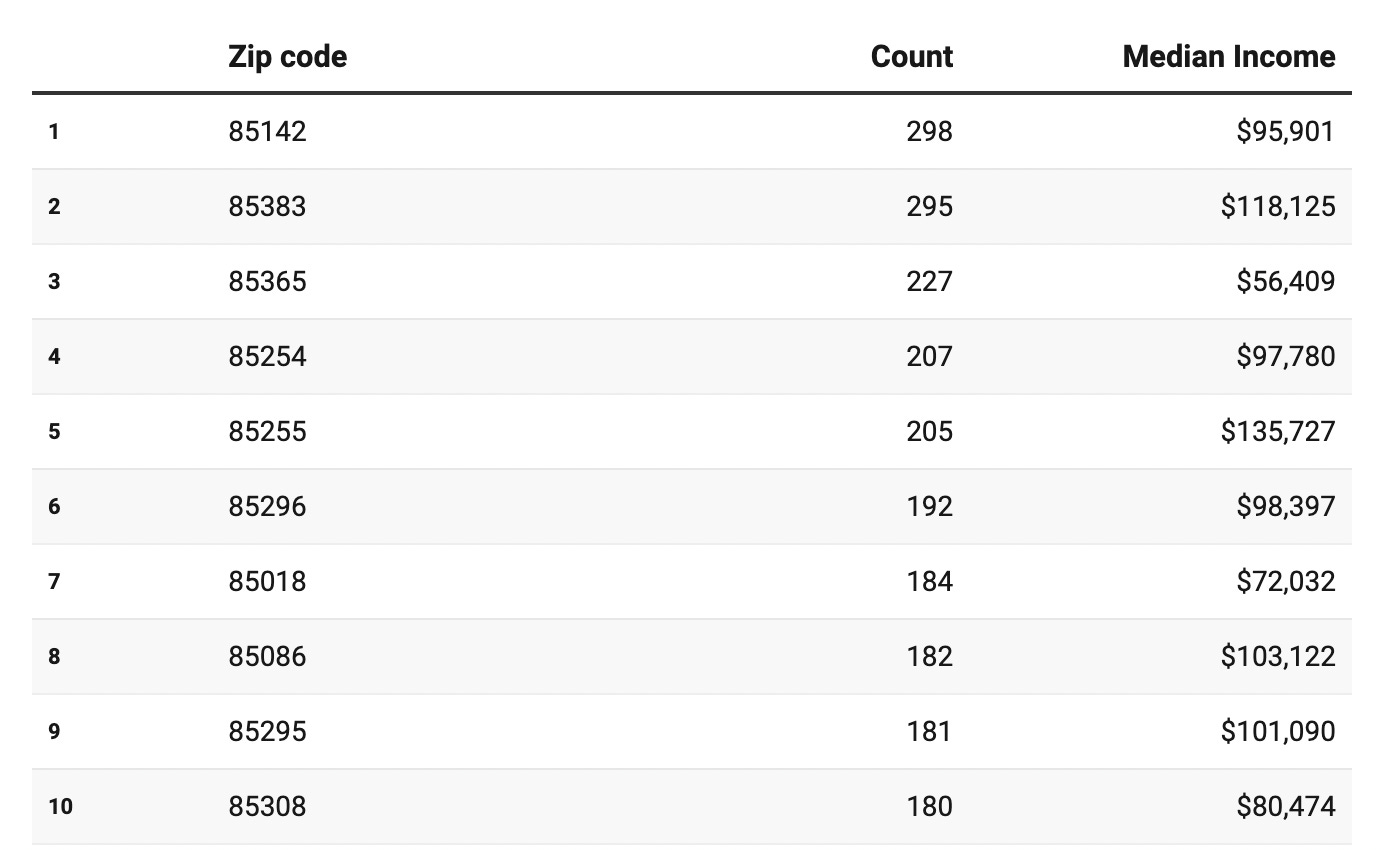Arizona’s ESA Expansion Is Serving the Wealthy
Let's take a look at the zip code data for median household income of those who have applied for ESAs under the universal expansion
With the ballot measure failing to collect enough signatures to put the new universal expansion1 on hold through the 2024 election, Arizona K-12 students can now get their Empowerment Scholarship Accounts and attend any private or parochial school they’d like at a cost to the taxpayers of roughly $7,000.2
We already saw an influx of applications come in for the first few weeks of eligibility with most of those going to families already enrolled in a private school rather than those who would be switching from public to private.

Of course, now that the application period is a full go (and the deadline extended from September 30 to October 15 in order to receive Q1 funding) those numbers will likely look different. How different remains to be seen, but I’m sure the Department of Education will provide those updates as they have been.
Many of the arguments in this always heated debate about school vouchers comes down to who can afford to attend private school and who cannot. Put simply, wealthy families can foot the bill and those in lower income areas struggle, as do the public schools they attend. The 75% figure from ADE in August shows that families who can already afford to attend these private schools were the first ones to hop on the opportunity to cash in on the taxpayer money to help them pay for the tuition (most private schools cost more than the $7,000).
I requested the zip code data of the new applicants from ADE and compared it to the median household income of each area to see if it was favoring the wealthy or if lower-income families were taking advantage of the expansion.
I put it together in a Google Map here. You can see that unsurprisingly most of the applications are within Maricopa County.
The data only reflects applications through September 27, so before knowing the Save Our Schools veto referendum failed
I pulled median household income data from the 2020 U.S. Census Bureau
ADE’s data provided to me redacted any zip code that had 20 or fewer families apply for an ESA, so I removed those zip codes from my chart. If you don’t see a zip code, that is why. In total those made up roughly 360 applications.
Here is what I found:
These are the top 10 zip codes for applications as of September 27. Click the screenshot above to see the full data. Out of a total of 12,100 applications, this data reflects 11,740 of them.
85142 is in Queen Creek; 85383 is Peoria; 85365 is Yuma; 85254 is Scottsdale; 85255 is Scottsdale; 85296 is Gilbert; 85018 is Phoenix (Biltmore/Arcadia area); 85086 is Phoenix; 85295 is Gilbert; and 85308 is Glendale.
There are 20 zip codes in Arizona reflected that have a median household income of at least $100,0003. From those 20, there are 2,208 application under the universal expansion, which makes up 18% of all applications through September 27.
According to the U.S. Census, Arizona’s median household income is $61,529.
Zip codes with a median income between $61,565 and $99,477 (so above the statewide median and below six figures) make up 5,963 applications from 77 areas across the state. That means
Nearly half of all applicants fall within that group (49.3%)
Grouping in the $100,000+ applicants, the total number of applicants above the statewide median household income is 8,171 or 67.5%
Here are the 5 lowest income areas (all under $40,000 median), which make up just 154 applications:
85713 in Tucson; 85706 in Tucson; 85301 in Glendale; 85712 in Tucson; and 85719 in Tucson.
80 applications are from Colorado City, a polygamous area in the northern most point of Arizona on the border with Utah. Lawmakers attempted to expand the ESA program for this city in 2020, but failed. It was written to help families attend schools over the state line in Hildale, Utah, which isn’t allowed under the ESA program even if you already qualified for an ESA.
This expansion effort failed in 2021, but was able to succeed this session with the support of the three Republican no votes last year: Michelle Udall, Joanne Osborn and Joel John. All three voted no in 2021 because they wanted some type of accountability measures in place. That didn’t happen and all three lost their respective races in the August primary to candidates further to the right of them.
Something to keep an eye on is how many schools will lower their tuition to $7,000 or new schools that will open up around this amount for the purpose of siphoning students from the competition.
One thing that will be interesting to see is how many families under the universal vouchers will sit on their money to help pay college tuition for their kids. Something I reported on in 2020 where some accounts had as much as $128,000 waiting to be spent. Granted, those students qualify for an ESA for a learning disability which means more money.





